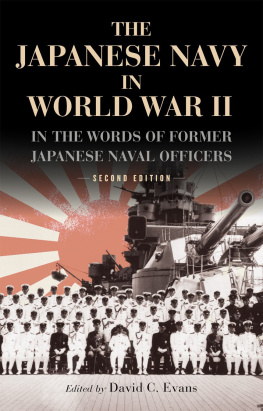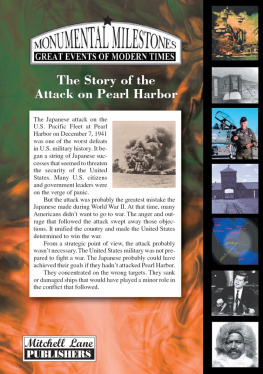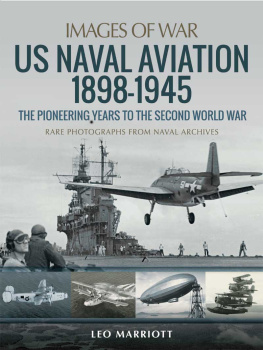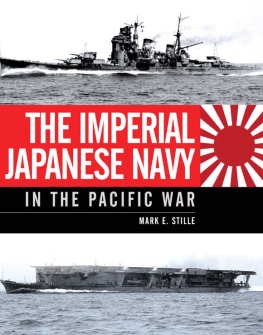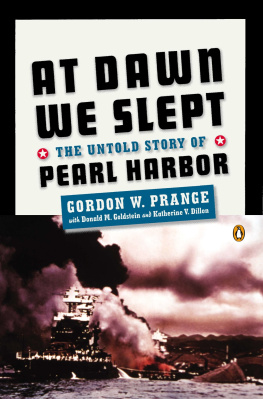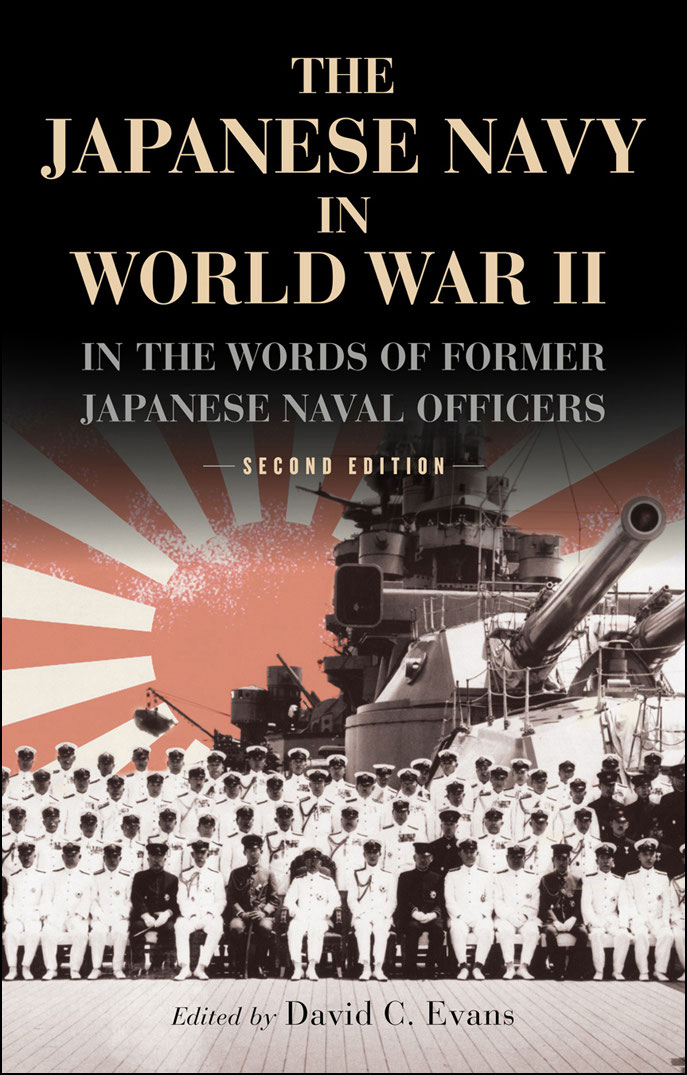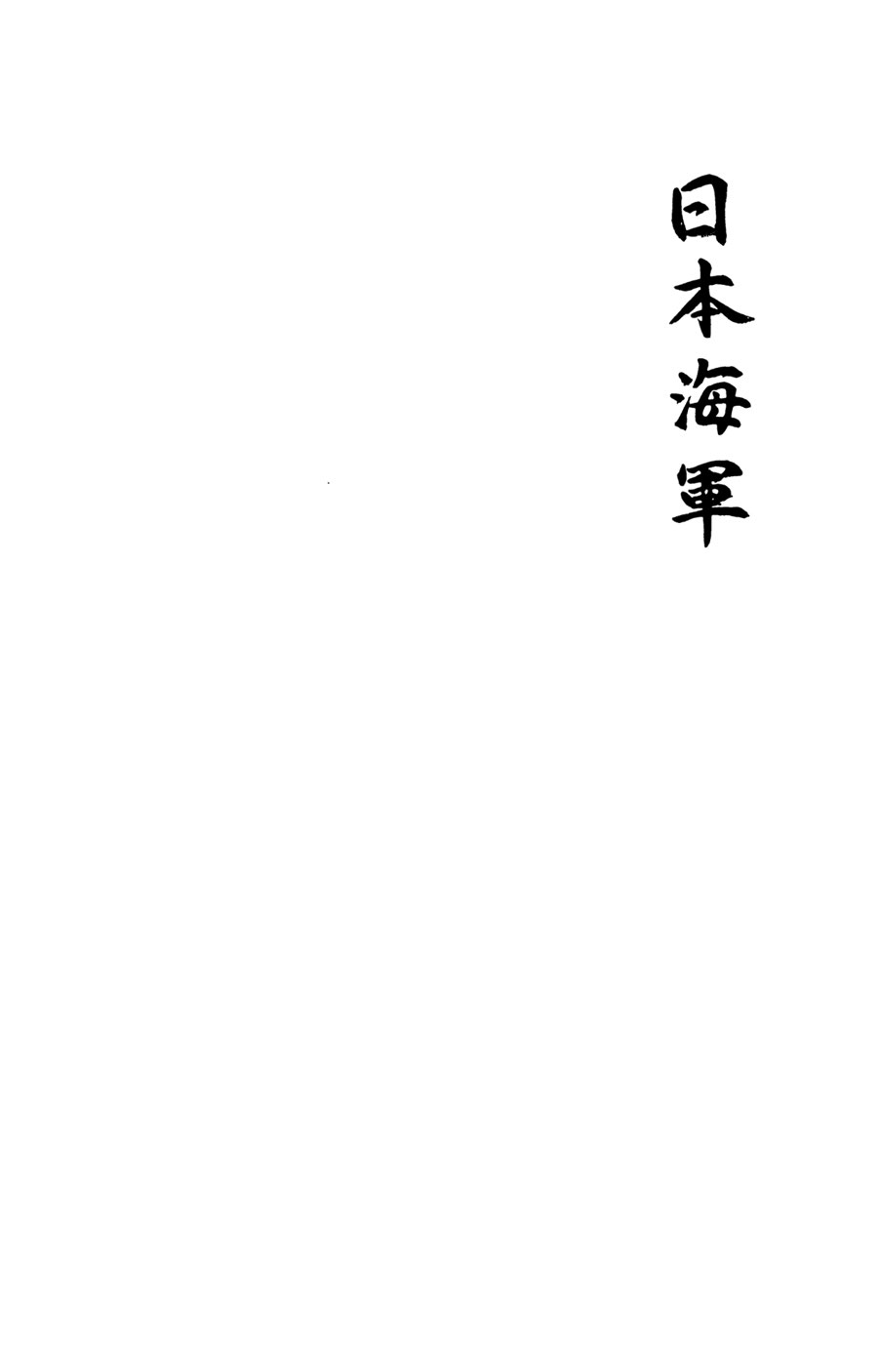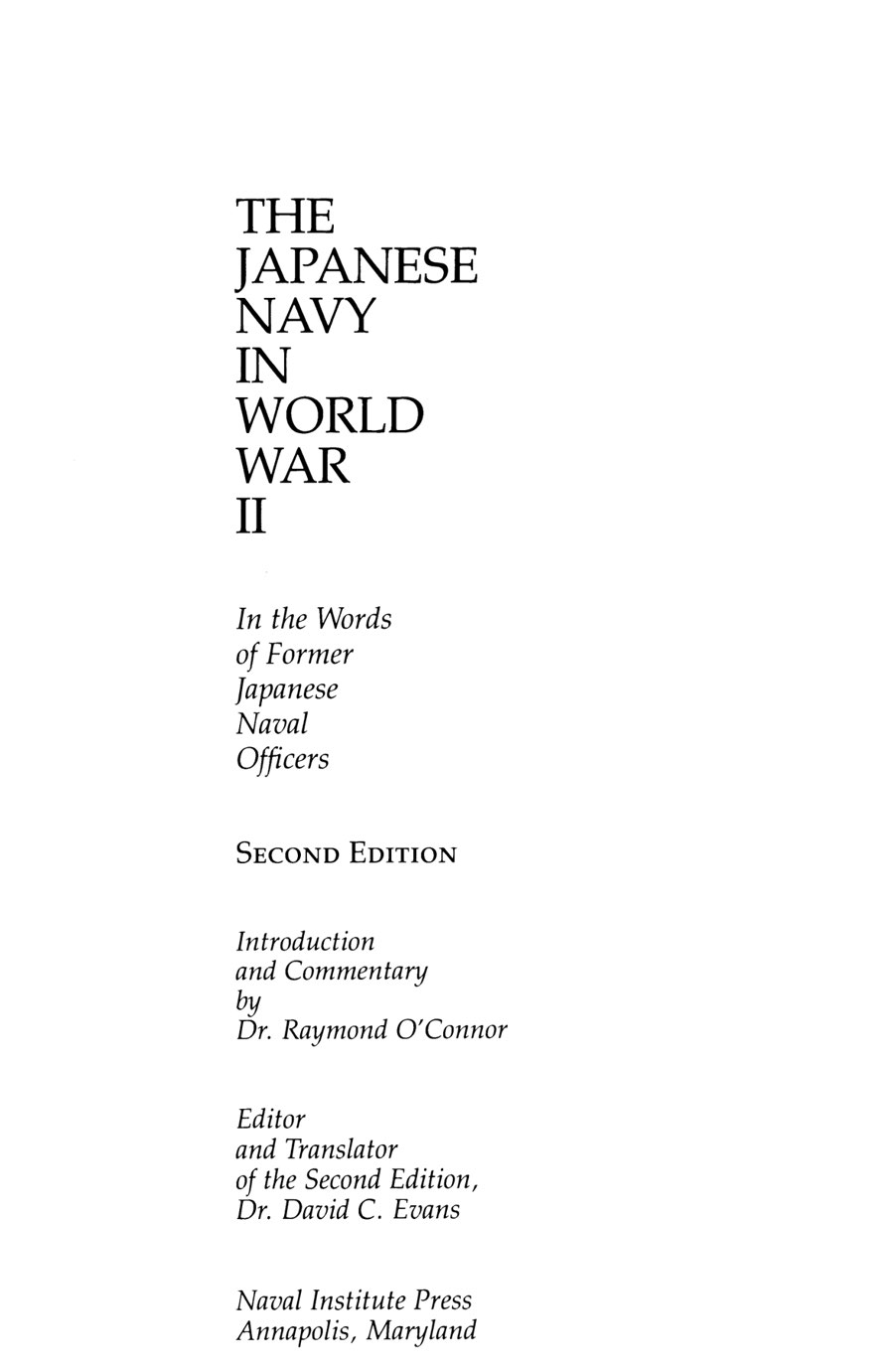Naval Institute Press
291 Wood Road
Annapolis, MD 21402
1969, 1986 by the United States Naval Institute, Annapolis, Maryland
All rights reserved. No part of this book may be reproduced or utilized in any form or by any means, electronic or mechanical, including photocopying and recording, or by any information storage and retrieval system, without permission in writing from the publisher.
All but two of the chapters herein were originally published in the United States Naval Institute Proceedings and copyrighted in 1952, 1953, 1954, 1955, 1956, 1957, 1958, 1960, 1961, and 1979.
Chapter 4 was translated, with permission, from Toshikazu Ohmae, Die japanischen Operationen im Bereich des Indischen Ozeans, Marine Rundschau 55 (April 1958).
Chapter 9 was translated, with permission, from Minoru Nomura, Rekishi no naka no Nihon kaigun (Tokyo: Hara Shob, 1980).
First Naval Institute Press paperback edition published in 2017.
ISBN: 978-1-68247-214-9 (eBook)
The Library of Congress has cataloged the hardcover edition as follows:
The Japanese Navy in World War II.
Includes index.
1. Japan. KaigunHistoryWorld War, 193945. 2. World War, 19391945Naval operations, Japanese. 3. World War, 19391945Aerial operations, Japanese.
I. OConnor, Raymond Gish. II. Evans, David C.
D777.J3 1986940.54595286-8537
Print editions meet the requirements of ANSI/NISO z39.48-1992 (Permanence of Paper).
252423222120191817987654321
First printing
Preface to the Second
Edition
Well over fifteen years have passed since the popular first edition of this book appeared. Yet interest in the Japanese navys role in World War II has, if anything, increased in the meantime.
This new edition is a response to that interest. It incorporates five more articles: three from the Naval Institute Proceedings, one from the German journal of maritime affairs Marine Rundschau, and one from Minoru Nomuras book Rekishi no naka no Nihon kaigun. I have translated the last two and provided short introductions for all five. They fill gaps in the previous edition by discussing operations in the Indian Ocean, the Battle of the Philippine Sea, the protection of merchant shipping, submarine warfare, and Japans general naval strategy.
As in the first edition, a brief introduction precedes each chapter. Minor errors in the first edition have been corrected and new photographs and maps added. I have updated the biographical sketches of authors and editors wherever possible. All notes at the back of the book are those of the editors and translators rather than the authors. In the text I have retained the first editions practice of listing Japanese names in Western order, surname last, and without macrons to indicate long vowels. The index, however, lists each Japanese name in the native order and with phonetically accurate romanization. Proper transliterations for Japanese ship names and technical terms are also provided in the index.
DAVID C. EVANS
Publishers Preface to the Original Edition
In presenting this anthology of articles on Japanese naval participation in World War II, the publisher wishes to acknowledge the contribution of those persons whose interest in naval history made it possible:
Herman O. Werner, professor emeritus of the U.S. Naval Academys Department of English, History, and Government and senior associate editor of the U.S. Naval Institute Proceedings from 1948 to 1960, first proposed the project. He was preparing introductory material at the time of his death in 1967.
Robert M. Langdon, associate professor in the same department and an associate editor of the Proceedings from 1951 to 1957, worked briefly on the book until his death that same year.
Credit for the idea of obtaining Japanese views on the war goes to Commander Roy de S. Horn, U.S. Navy (Retired), who was managing editor of the Naval Institute from 1945 to 1959.
Roger Pineau edited and prepared most of the chapters for publication in the Proceedings; part of the work was done by Clark Kawakami. English translations of the Japanese texts were supplied by Masataka Chihaya, Masaru Chikuami, and Toshikazu Ohmae.
Contents
SHIGERU FUKUDOME
MITSUO FUCHIDA
KOICHI SHIMADA
TOSHIKAZU OHMAE
MITSUO FUCHIDA AND MASATAKE OKUMIYA
RAIZO TANAKA
TOSHIKAZU OHMAE
MASATAKA CHIHAYA
MINORU NOMURA
10The Air Battle off Taiwan
SHIGERU FUKUDOME
11The Battle of Leyte Gulf
TOMIJI KOYANAGI
12Why Japans Antisubmarine Warfare Failed
ATSUSHI OI
13The Kamikaze Attack Corps
RIKIHEI INOGUCHI AND TADASHI NAKAJIMA
14Japanese Submarine Tactics and the Kaiten
KENNOSUKE TORISU, ASSISTED BY MASATAKA CHIHAYA
15Kamikazes in the Okinawa Campaign
TOSHIYUKI YOKOI
16The Sinking of the Yamato
MITSURU YOSHIDA
17Thoughts on Japans Naval Defeat
TOSHIYUKI YOKOI
The Japanese task force attack on the American fleet at Pearl Harbor, Hawaii, on 7 December 1941 was the first engagement in what became the greatest naval war in history, marking the culmination of a rivalry in the Pacific that had endured for generations. The initial hostility to the United States that followed the opening of Japan to Western trade by Commodore Perry and his squadron in 1854 was succeeded by an era of friendship and close commercial ties, marred only occasionally by American resistance to Japanese attempts to gain hegemony over portions of the Asian mainland in the early years of the twentieth century.
After World War I, during which Japan had taken steps to extend and consolidate her influence in China, the situation was aggravated by naval competition among the United States, Japan, and Great Britain. Realizing that armaments were expressions and instruments of political objectives, the leading powers met in Washington in 1921 to discuss Far Eastern problems and try to halt the weapons race. Agreement was reached on the preservation of the territorial and commercial integrity of Chinathe Open Door policy as formulated by Secretary of State John Hay in 18991900which thwarted Japanese ambitions in that country; on the nonfortification of certain bases; and on a limitation of two categories of naval vessels, namely, capital ships and aircraft carriers. The ratio of strength established allowed Japan to build up to 60 percent of the quota allocated to both the United States and Great Britainthe 5:5:3 formula. Regarded by some as the equivalent of Rolls-Royce, Rolls-Royce, Ford, this ratio, which relegated Japan to the category of a second-class power, was resented by many Japanese, especially members of the armed forces, who believed the agreement was made by civilian leaders who did not understand the imperatives of imperial defense.
A subsequent conference in London in 1930 extended limitations to all types of naval vessels with some improvement in the ratio for Japan, but the resulting furor over the treaty helped spur Japanese military action in Manchuria the following year. American attempts to halt the aggression provoked the Stimson-Hoover Doctrine, which declared that the United States would not recognize the acquisition of territory by the use of force. A condemnation of the Manchurian invasion by the League of Nations led to Japanese withdrawal from that body. In 1934, when the government in Tokyo announced that it would reject an extension of the naval limitation treaties unless Japan was given parity in warships with the United States and Great Britain, the stage was set for renewed naval competition and, ostensibly, for further Japanese aggressive moves in the Far East.

